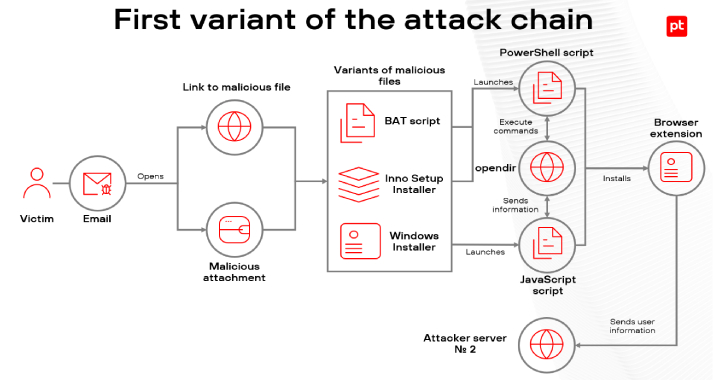
Why an Operational Resilience Program is Important
Introduction
In an increasingly complex and interconnected world, businesses face a myriad of challenges that can disrupt their operations. From cyberattacks and natural disasters to supply chain disruptions and regulatory changes, the threats to business continuity are ever-present. This is where an Operational Resilience Program comes into play. In this article, we will explore the significance of having such a program in place and how it can help organizations navigate the turbulent waters of today’s business landscape.
Understanding Operational Resilience
Operational resilience refers to an organization’s ability to withstand and adapt to disruptions while maintaining essential functions and safeguarding the interests of its stakeholders. It’s more than just disaster recovery or business continuity planning; it’s about creating a holistic and dynamic strategy that can address a wide range of threats.
Identifying Potential Disruptions
To build operational resilience, businesses must first identify the potential disruptions they may face. This involves assessing both internal and external factors that could impact their operations. These factors can include:
- Cybersecurity Threats: With the increasing digitization of business processes, the risk of cyberattacks has grown significantly. Operational resilience programs should include measures to protect against data breaches, ransomware attacks, and other cyber threats.
- Natural Disasters: Climate change has made extreme weather events more frequent and severe. Organizations need to prepare for the possibility of hurricanes, earthquakes, floods, and wildfires, depending on their geographical location.
- Supply Chain Vulnerabilities: Global supply chains are vulnerable to disruptions caused by factors like transportation bottlenecks, geopolitical tensions, and trade disputes. An operational resilience program should consider these risks and develop strategies to mitigate them.
- Regulatory Changes: Laws and regulations can change rapidly, affecting how businesses operate. Staying compliant and adapting to new regulatory requirements is essential for resilience.
- Technological Failures: Dependence on technology means that IT system failures, software glitches, or hardware breakdowns can have a significant impact on operations.
Building Redundancy and Flexibility
Operational resilience programs aim to build redundancy and flexibility into critical processes. Redundancy involves having backup systems or resources in place to ensure that essential functions can continue even when primary systems fail. Flexibility means having the capability to adapt to changing circumstances and rapidly shifting priorities.
For example, financial institutions often maintain backup data centers in different geographical locations to ensure that customer transactions can continue without interruption, even in the event of a data center failure. Similarly, businesses may diversify their supplier base to reduce the risk of supply chain disruptions.
The Benefits of an Operational Resilience Program
Implementing an operational resilience program offers several key benefits to organizations:
- Enhanced Business Continuity
The primary goal of an operational resilience program is to ensure that essential business functions can continue in the face of disruptions. This not only minimizes downtime but also maintains customer trust and preserves revenue streams. Businesses that can quickly recover from disruptions are better positioned to thrive in a competitive market.
- Protection of Reputation
A disruption can tarnish an organization’s reputation if it leads to customer dissatisfaction or data breaches. An operational resilience program helps mitigate these risks by ensuring that customer data is secure, and services are uninterrupted. In the long run, this protection of reputation can translate into sustained customer loyalty.
- Regulatory Compliance
Many industries are subject to strict regulatory requirements regarding the continuity of essential services. An operational resilience program helps organizations stay compliant with these regulations and avoid costly fines or legal consequences.
- Cost Savings
While implementing an operational resilience program requires an initial investment, it can ultimately lead to cost savings. Downtime and disruptions can be expensive, and the ability to recover quickly can reduce these costs significantly. Additionally, insurance premiums may be lower for organizations with robust resilience plans in place.
- Competitive Advantage
In a world where disruptions are increasingly common, businesses that can maintain operations while competitors falter gain a significant competitive advantage. Customers and partners are more likely to choose organizations that have a proven track record of resilience.
Key Components of an Operational Resilience Program
To establish a successful operational resilience program, organizations should consider the following key components:
- Risk Assessment and Scenario Planning
Begin by identifying potential risks and vulnerabilities specific to your industry and organization. Conduct a thorough risk assessment to understand the impact of these risks and prioritize them. Scenario planning involves creating hypothetical situations and developing response strategies to test the effectiveness of your resilience program.
- Business Impact Analysis
Determine which business functions are critical for your organization’s survival and success. A business impact analysis helps identify the dependencies and interdependencies between different processes and systems. This information is crucial for developing resilience strategies.
- Redundancy and Backup Systems
Implement redundancy and backup systems for critical processes and data. This may include data replication, off-site backup, and failover capabilities for IT systems. Redundancy should extend to other resources, such as suppliers and facilities, where feasible.
- Crisis Management and Communication
Develop a robust crisis management plan that outlines how the organization will respond to different types of disruptions. Effective communication is a critical component of crisis management. Ensure that there are clear channels for communication both internally and externally, including with customers, employees, regulators, and the media.
- Training and Testing
Regular training and testing are essential to ensure that employees are familiar with their roles during a disruption. Conduct drills and simulations to evaluate the effectiveness of your resilience program and identify areas for improvement.
- Continuous Improvement
An operational resilience program is not static; it should evolve with changing threats and circumstances. Regularly review and update your program to incorporate lessons learned from previous disruptions and to stay ahead of emerging risks.
Case Study: The Importance of Operational Resilience
To illustrate the importance of operational resilience, consider the case of a global manufacturing company, XYZ Manufacturing, and how its operational resilience program saved the day during a supply chain disruption.
XYZ Manufacturing relies on a complex global supply chain to source raw materials and components for its products. One day, a significant disruption occurred when a key supplier in Asia faced a labor strike, halting production and causing delays in the delivery of critical components.
However, XYZ Manufacturing had implemented an operational resilience program that included supply chain diversification and contingency planning. When the disruption occurred, they quickly shifted production to an alternative supplier in a different region. This flexibility allowed them to maintain production levels and fulfill customer orders without major disruptions.
Not only did XYZ Manufacturing avoid significant financial losses and customer dissatisfaction, but they also gained a reputation for reliability in the market. Competitors who did not have robust resilience plans in place struggled to recover from similar disruptions, and some even lost key customers to XYZ Manufacturing.
Conclusion
In today’s unpredictable business environment, an operational resilience program is not a luxury but a necessity. It is a strategic imperative for organizations seeking to thrive in the face of disruptions, whether they be natural disasters, cyberattacks, supply chain interruptions, or regulatory changes. The benefits of such a program extend beyond mere survival; they include enhanced business continuity, protection of reputation, regulatory compliance, cost savings, and a competitive advantage.
To establish a successful operational resilience program, organizations should begin with a comprehensive risk assessment, followed by a business impact analysis. Redundancy and backup systems, crisis management and communication plans, training, and continuous improvement efforts are all integral components of a resilient strategy. Case studies like that of XYZ Manufacturing demonstrate how effective operational resilience can make the difference between success and failure when adversity strikes.
In summary, an operational resilience program is not just about surviving disruptions—it’s about thriving in an uncertain world and emerging stronger from the challenges that every organization will inevitably face. It’s an investment in the future that pays dividends in terms of resilience, reputation, and competitive advantage.
Contact Cyber Defense Advisors to learn more about our Operational Resilience Program solutions.




